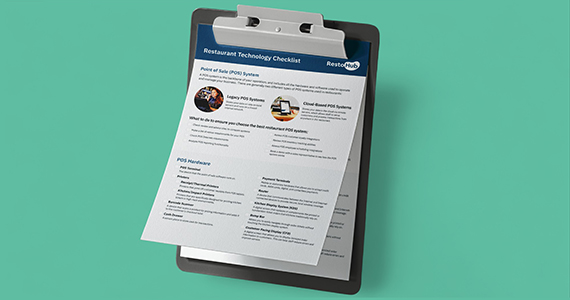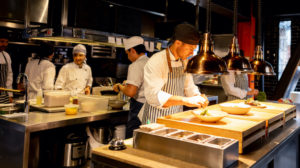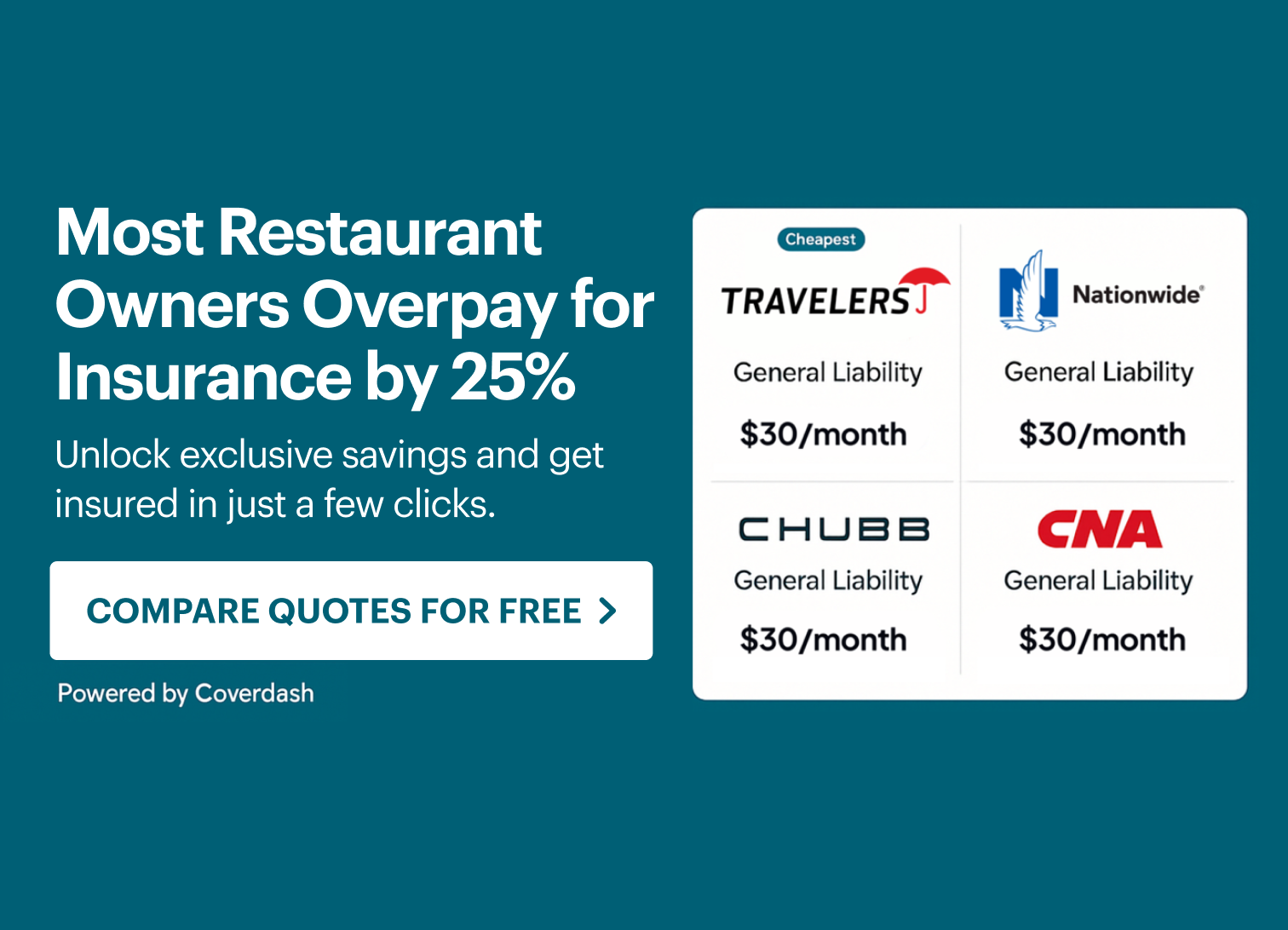Starting a new restaurant or bar is an exciting process that involves making some important business decisions upfront – from designing the perfect menu to hiring the right employees. Another crucial decision you’ll need to make is whether or not to invest in restaurant management software.
To help make that decision process a little easier, we’ve put together a comprehensive guide to restaurant management software. In this guide, we’ll cover:
- What restaurant management software is
- The top five benefits of using management software in your restaurant
- Why you should invest in management software
What is Restaurant Management Software?
Restaurant management software refers to a type of point of sale (POS) software specifically designed for restaurants and other foodservice businesses. This software helps business owners and managers run their operations more efficiently by automating numerous tasks essential to running a restaurant, such as menu management, inventory tracking, online ordering, staff scheduling, and more.

Use this checklist to ensure your restaurant is equipped with all the necessary technology before opening day.
5 Benefits of Using Restaurant Management Software in Your Venue
If you’ve never used restaurant management software before, you may be wondering if you really need it to run your operation. To dispel any fears and help you make the leap, we’ve broken down the top five reasons why every new restaurant should make this investment.
1. Increased Efficiency
One of the primary advantages of investing in restaurant management software is that it can help increase the overall efficiency of your business. A good system will track all your orders, inventory, and customers in one central location. This will enable you to quickly see where any bottlenecks are occurring in your restaurant and allow you to take the necessary steps to correct them.
Of course, there are many different facets of restaurant management software. Here is a brief overview of some of the features of a modern, restaurant management solution.
Point of Sale (POS)
The POS is the core of any restaurant management software. The POS essentially acts as the central hub for your restaurant, helping you with everything from processing sales to managing inventory. Most modern POS systems also support third-party integrations that help support additional functions like accounting, online ordering, staff scheduling, and more.
Online Ordering
Most restaurant management software also includes online ordering capabilities. In most cases, this refers to tools that allow customers to place orders for food and beverages directly from the restaurant’s website. Customers can then pay for their order online, and either pick it up at the restaurant or have it delivered.
More advanced online ordering solutions also allow customers to make additional modifications and customizations to their orders, providing an even more personalized customer experience.
Floor Plan and Table Management
One of the most beneficial features of restaurant management software is its floor plan and table management capabilities. This allows restaurants to virtually create and manage their venue’s floor plan so servers can easily be assigned to different sections and tables. Advanced floor plan management tools also allow hosts to switch tables for diners easily without interrupting the flow of service – or losing their bills.
Menu Management
Like your floor plan, your menu is also a pillar of your restaurant’s operation. Restaurant management software comes equipped with extensive menu management capabilities that can help you build and change your menu in minutes. This not only allows you to make changes for certain times of the day or to change your menu with the seasons, but it also helps you keep servers in the loop when certain menu items may no longer be available. Some menu management tools are also equipped with menu engineering features, which allow you to strategically upsell and cross-sell different items.

Use this checklist to ensure your restaurant is equipped with all the necessary technology before opening day.
Inventory Management
Another key feature of modern restaurant management software is inventory tracking. , Inventory management tools help you track and manage stock levels to ensure your business can meet customer demand and alert servers when items are running low.
Inventory management is also a crucial feature because it allows you to generate reports that you can use to enhance inventory management practices. For instance, restaurant owners and managers can leverage real-time reporting on stock levels so they know exactly what and how much to order from vendors, helping reduce costly food waste.
2. Improved Marketing
When opening a new restaurant, there are countless factors to consider. However, one area often overlooked is restaurant software’s role in enhancing marketing efforts. With the right tools, businesses can readily track guests’ preferences and target their marketing campaigns accordingly. More specifically, they can send targeted emails to customers based on their dining choices and previous orders. For example, if you have a list of customers who have ordered your burger in the past three months, you can use this information to create a targeted burger promotion.
Additionally, most restaurant management software is equipped with tools to streamline loyalty programs, reinforce retention rates, and encourage repeat business. Any competitive edge a new restaurant can get is worth considering in today’s crowded market. Thus, investing in these applications is a smart way to give your business a boost.
3. Reduced Food Costs
As any restaurateur knows, running a successful restaurant involves overseeing many moving parts, and one of the most crucial parts is inventory management. Careful management of stock and suppliers is essential to keeping costs under control and reducing waste. However, traditional inventory tracking can be time-consuming and error-prone – this is where restaurant software comes in.

As mentioned above, most restaurant management software is equipped with inventory tracking capabilities that help business owners track food costs and inventory data in real-time, identify opportunities for cost savings, and make more informed decisions about menu pricing. In addition, automating food cost tracking frees employees to do other vital tasks. As an illustration, restaurant market trends indicate that 90% of restaurateurs believe increased automation would help their staff focus on more critical work.
With this in mind, investing in restaurant management software with advanced inventory tracking capabilities can be a savvy move to reduce food costs, avoid overordering, and eliminate food waste. Not to mention, it can aid in negotiating better deals with suppliers because it gives you more information on what you’re spending and how food costs are changing.

4. Better Employee Management
A restaurant is only as good as its employees. From the front of house staff who greet guests and take orders to the back house staff who prepare the food, each member plays a critical role in delivering a great dining experience.
Still, managing a restaurant is a complex operation, and it can be challenging to manage a large staff of front of house and back of house employees. As a result, retention is a common struggle for many restaurants. In fact, studies show that the average restaurant worker changes jobs every 56 days, compared to the 4.2-year average tenure across jobs in the U.S. While this might sound like an insurmountable challenge, this is where the restaurant management software can help.
Most restaurant management software is equipped with staff management capabilities that can help to create happier and more productive teams.For instance, most software allows you to create employee schedules, track employee hours, and manage payroll. Additionally, it can help monitor employee performance and identify areas for improvement.
By making use of these staff management capabilities, restaurant owners and managers can avoid costly mistakes and keep their guests happy. But it can also help ensure employees are happier and more satisfied with their jobs, ultimately boosting retention and helping to prevent major staffing shortages.
5. Increased Revenue
When choosing to invest in new software for their restaurants, many operators weigh the cost of the technology against the potential benefits. Fortunately, restaurant management software comes with a major return on investment.
Restaurant management software can help boost the bottom line by streamlining operations and increasing efficiencies. For example, a mobile POS with tableside ordering capabilities allows servers to move faster, reduce errors, and provide of better customer experience – all of which allows you to turn tables faster and seat more parties during each service. Moreover, high-quality software will support you in running promotions and discounts, which can aid in attracting new guests and encouraging existing customers to spend more money each time they visit.
In a competitive industry, every bit helps, and adopting a management system can give your business the boost it needs to succeed. Consequently, it’s no surprise that an increasing number of restaurants are investing in this type of software.

Use this checklist to ensure your restaurant is equipped with all the necessary technology before opening day.
Elevate your Dining Experience with Restaurant Management Software
It’s clear that the right restaurant management software can help your business run smoothly, increase efficiency, and boost productivity. Not only will this improve day-to-day dining operations, but it can also positively impact your bottom line.
And when you do take the next step to purchase restaurant management software, remember that it’s best to select from the best restaurant management software examples with expert reviews. The right investment is just what you need to help your restaurant thrive.
Sign up for our free weekly TouchBistro Newsletter





